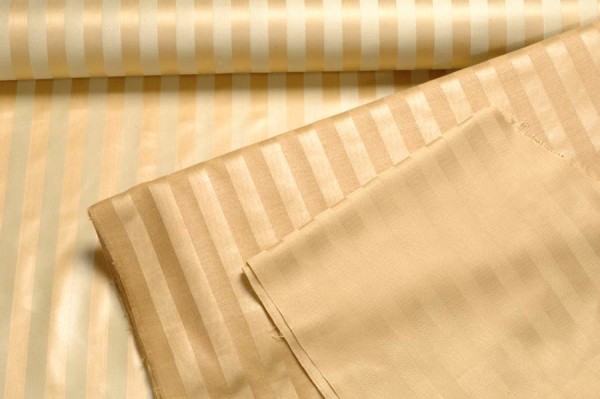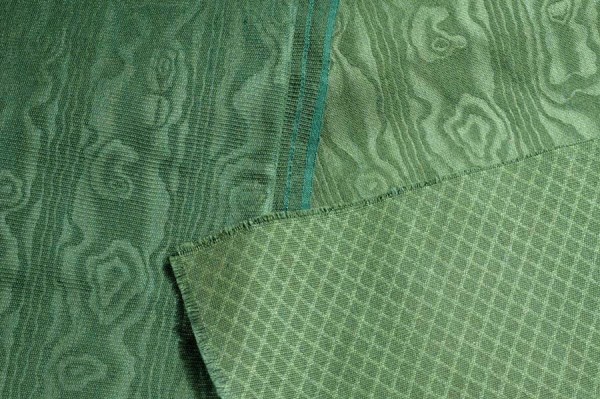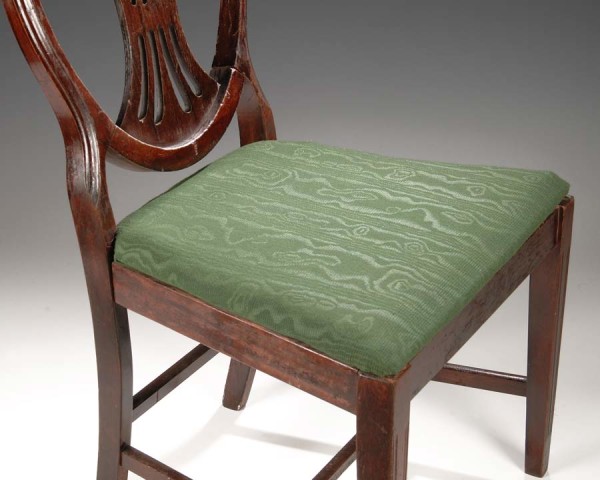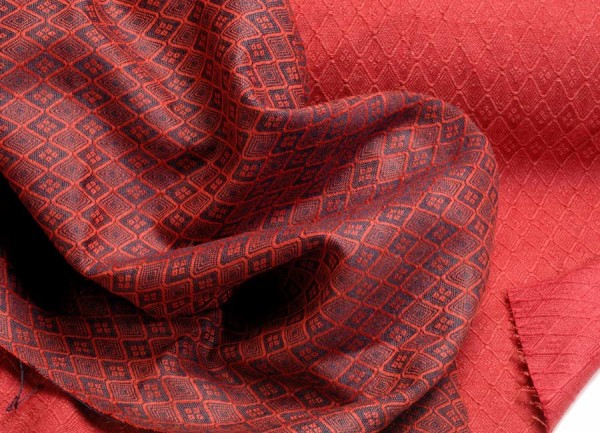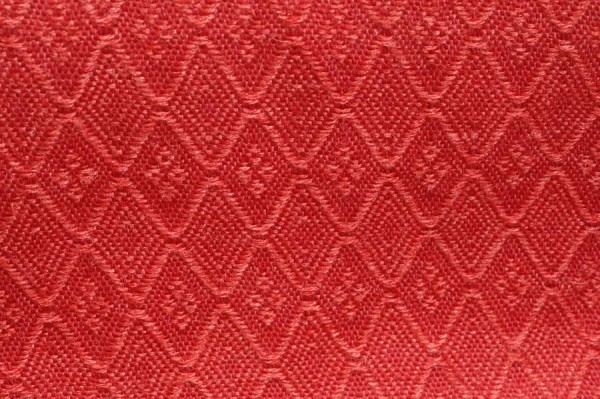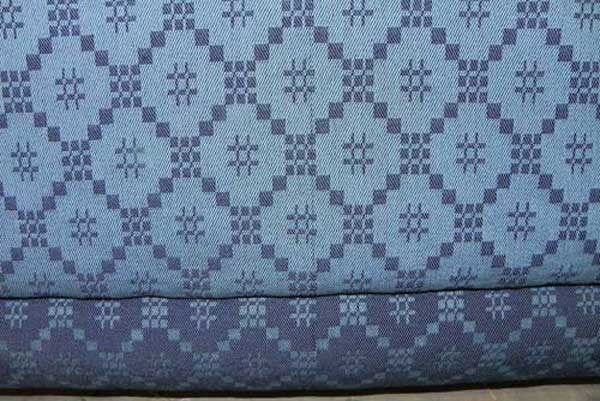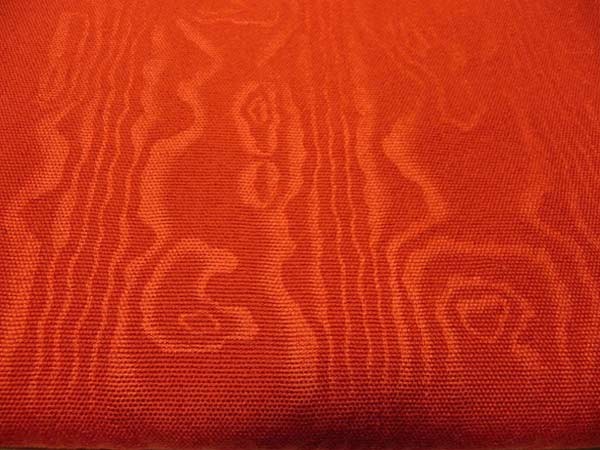Historically Accurate Reproduction Fabrics
We weave our fabrics in a wide variety of natural fibers — wool, worsted, silk, cotton, linen, alpaca, cashmere, mohair — and we use the highest quality yarns. We can even custom dye yarns to match wallpaper or paint swatches. We inspect and finish every yard by hand to ensure that you receive the very best custom fabric.
Dimity
Dimity was one of the most important and popular interior furnishing fabrics in 18th- and 19th-century America. It was used for window treatments, bed hangings, and loose covers for furniture. Our dimity patterns come from period weavers’ draft books and surviving document examples. We make dimity in pure white and natural cotton, natural and bleached linen, and custom colors.
Gossamer
Gossamer is a light fabric with an open weave strucure and a beautiful drape. Historically it was used for window treatments, bed hangings, covers on chandeliers and gilt picture frames, and even as early mosquito netting! We weave gossamer in pure white and natural cotton and linen, and in custom colors.
Gossamer curtain panel in natural cotton and linen trimmed with custom cut fringe. We also made the valance using one of our figured worsted fabrics in mustard and ginger worsted and silk, and the green and mustard worsted and silk cut fringe and tassels.
Figured Worsted
Figured worsted wool, or patterned worsted, was sometimes called “everlasting” in period sources. It is incredibly durable and beautiful, with a subtle sheen and excellent drape. It was a popular choice for upholstery and drapery, both on windows and beds.
Baize, Camblet, Harateen
Plain woven worsted fabrics were also very important in early American interiors. Baize covered desks and game tables, and it was made into crumb cloths that lay on top of carpets underneath dining tables. Camblets and Harateens adorned windows, beds, and upholstered furniture.
Historic Checks
Furniture checks were important for window treatments, bed hangings, and loose covers on furniture. In early America, furniture checks were made of cotton, linen, and worsted wool–and we still make them that way, in custom colors, of course.
Silks
Pure silk, in patterns and stripes, has been the choice high style fabric for interior furnishings for centuries.
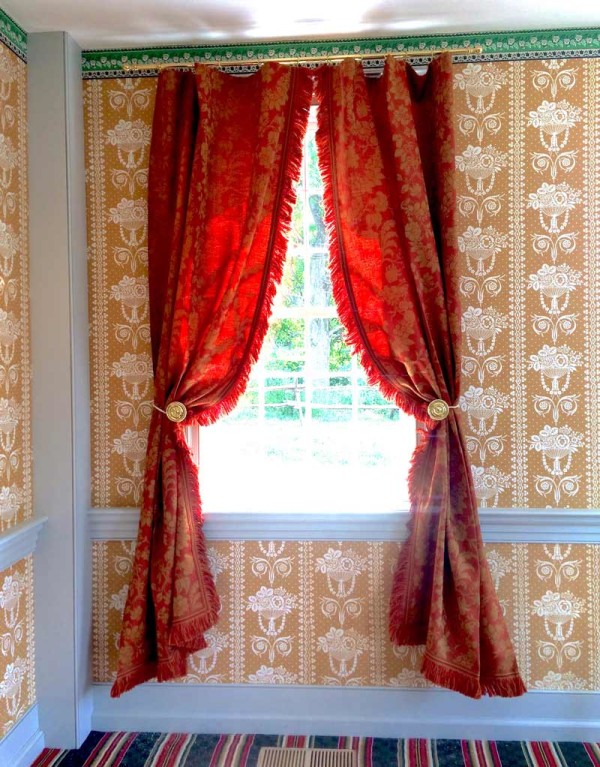
A woven damask designed by Marguerite Garthwaite in 1751. The painting is in the Victoria and Albert Museum. The carpet is a reproduction of a fragment at Old Sturbridge Village but also appears in the Silas Burton draft book.
